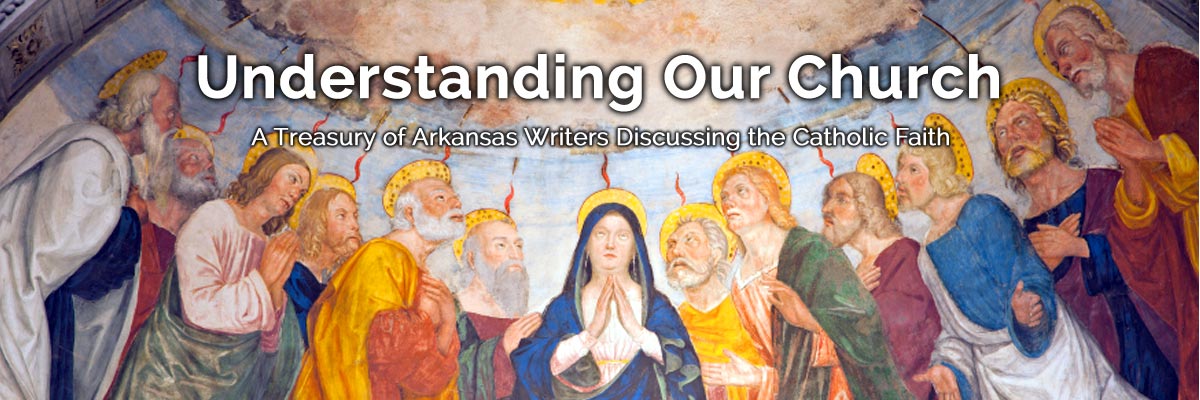Official Website of the
Catholic Diocese of Little Rock
Minor basilicas are not ‘mother churches,’ but worth exploring in U.S.
Published: October 1, 2015
By Kelli Nugent
St. Edward Church, Texarkana
There are four churches honored as major basilicas, the “mother churches” of Rome: St. John Lateran (cathedral of Church of Rome), St. Peter; St. Mary Major; and St. Paul Outside the Walls. These churches have a particular connection to the pope in history and in practice.
The title of minor basilica is granted to churches that have some particular importance in liturgical and pastoral life. Historical value, importance of the church, sacred art, sacred relics and appropriateness of size are also taken into consideration.
The Church document that explains the purpose, conditions for the granting of the title of minor basilica as well as the duties of these churches is "Domus Ecclesiae: Norms for the Granting of the Title of Minor Basilica." They have a special connection to and are considered the pope’s churches outside of Rome.
There are four churches honored as major basilicas, the “mother churches” of Rome: St. John Lateran (cathedral of Church of Rome), St. Peter; St. Mary Major; and St. Paul Outside the Walls. These churches have a particular connection to the pope in history and in practice.
There are only 82 minor basilicas in the United States (close to 1,600 throughout the world). The most recent to receive this honor is the National Shrine of the Little Flower in Royal Oak, Mich. (Archdiocese of Detroit) on Jan. 31, 2015.
The three that are closest in proximity to the Diocese of Little Rock and would territorially cover our diocese are: Cathedral Basilica of St. Louis, St. Mary’s Basilica (Natchez, Miss.) and Minor Basilica of the Immaculate Conception (Natchitoches, La.).
My friend, Father Ryan Humphries of the Diocese of Alexandria, La., is the current rector of the Minor Basilica of the Immaculate Conception. He shared that technically the territory of a basilica is about halfway to the next basilica.
This territory is not in terms of pastoral ministry, but in regard to the following: minor basilicas are charged with excellence in sacred liturgy, excellence in catechesis and the promotion and promulgation of the writings of the Holy Father. They are to promote participation in the Liturgy of the Hours and offer frequent opportunities for confession.
Particular to minor basilicas are certain feast days, which must be celebrated “to make clear the particular bond of communion by which the minor basilica is united with the Roman cathedra of Peter. Every year they must be celebrated with particular care: the Feast of the Chair of St. Peter the Apostle (Feb. 22), the Solemnity of Sts. Peter and Paul, Apostles (June 29), and the anniversary of the supreme pontiff’s election or inauguration in the supreme ministry (for Pope Francis, March 13).” (Domus Ecclesiae III, 4)
There are also basilican feast days during which “the faithful who devoutly visit the basilica and within it participate in any sacred rite or at least recite the Lord’s Prayer and the profession of faith may obtain a plenary indulgence under the usual conditions (sacramental confession, eucharistic Communion and prayer for the intention of the Supreme Pontiff): 1.) the anniversary of the dedication of the same basilica; 2.) the day of the liturgical celebration of the title; 3.) the solemnity of Sts. Peter and Paul; 4.) the anniversary of the granting of the title basilica; 5.) once a year on a day to be determined by the local ordinary; and 6.) once a year on a day freely chosen by each of the faithful.” (Domus Ecclesiae IV, 2)
Granted to the basilica are special insignia which includes the “conopeum” or umbrella (half-opened) of alternate red and yellow silk stripes, the “tintinnabulum,” which is a bell mounted on a pole, and permission to use the papal symbol of the “crossed keys” to “be exhibited on banners, furnishings and the seal of the basilica.” (Domus Ecclesiae IV, 4)
While many would love to make a pilgrimage to the eternal city and visit the “mother churches,” perhaps if time or finances don’t allow that, one might consider a pilgrimage this side of “the pond” to a minor basilica.




